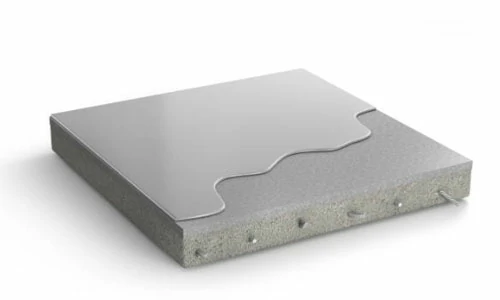In recent years, due to the popularity of decoration styles such as industrial style, a construction technology called self-leveling ground has entered the public eye, and its own micro-industrial style effect attracts many owners.
What is self-leveling?
Self-leveling is simply a leveling process. That is, on the base layer, materials with automatic leveling or a little auxiliary leveling function are used. After on-site stirring, the paving will flow automatically, and the surface layer formed will be automatically filled according to the low-lying situation.

In recent years, with the advancement of technology and materials, self-leveling is no longer used as a floor cushion, but can be directly applied to the ground for decoration to achieve the effect of floor decoration materials.
Three common self-leveling:
1. Cement self-leveling

It is a dry-mixed mortar mainly composed of cement, superplasticized components, natural high-strength aggregates and polymer material-cellulose ether.
The thickness of the cement self-leveling layer is about 3-5mm. The finished floor has a strong mirror feel and a texture similar to that of the cement floor. Cement self-leveling is widely used in the decoration of industrial style.
Epoxy self-leveling mainly uses epoxy resin as the main material, which is mixed with curing agent, diluent, solvent, dispersing agent (RDP) and some fillers.
We often see epoxy “colored self-leveling” in underground garages, because epoxy self-leveling has the effect of preventing cement floor from ash, which is common in garages or industrial workshops.
2. Epoxy self-leveling

3. Gypsum self-leveling

Gypsum self-leveling also known as gypsum-based self-leveling mortar. It is a kind of dry powder mortar specially used for ground leveling, which is made of gypsum material, special aggregate and various construction chemical additives (cellulose ether) carefully configured and evenly mixed in the factory.
Importance of cellulose ether to self-leveling
Cellulose ether is a common construction additive used in cement self-leveling and gypsum self-leveling. Low viscosity MilaCell™ cellulose ether is widely used for self-leveling. Since self-leveling requires uniformly stirred mortar to be leveled automatically on the ground, the use of water-based materials is relatively large. Adding MilaCell™ cellulose ether can control the water retention of the ground after pouring so that the water seepage is not obvious, and the dry ground has high strength and low shrinkage rate, thereby greatly reducing cracks.
